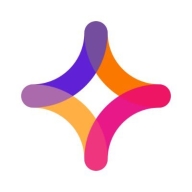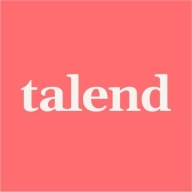

Jitterbit Harmony and Talend Data Integration compete in the data integration category. Jitterbit Harmony appears to have an advantage with its flexible pricing and quick deployment, while Talend Data Integration is favored for its feature-rich capabilities.
Features: Jitterbit Harmony provides straightforward integration with rapid deployment, real-time data access, and a user-friendly interface. Talend Data Integration offers a feature-packed platform with extensive data transformation functions, robust connectors for diverse sources, and code generation to streamline processes.
Room for Improvement: Jitterbit Harmony could benefit from strengthening its custom scripting capabilities, expanding integration options, and enhancing advanced transformation features. Talend Data Integration may improve by simplifying its setup process, refining user interface complexities, and better managing resource consumption during large-scale operations.
Ease of Deployment and Customer Service: Jitterbit Harmony is known for its quick deployment and strong support, facilitating seamless integration. Talend Data Integration may take longer to set up but offers comprehensive customer resources and community support to assist users.
Pricing and ROI: Jitterbit Harmony offers flexible pricing suitable for budget-conscious businesses while ensuring a good ROI with its efficient solutions. Talend Data Integration requires a more substantial initial investment but delivers significant long-term ROI, providing value for enterprises with complex data needs.
It has helped us save a lot of time by automating repetitive data processes and reducing manual interventions.
They didn't want to use separate ETL tools for MDM or for TMC and data preparation, which is all included in one package.
The support team is responsive when we raise issues, and they usually provide clear guidance or solutions.
We have a partnership with Talend for support, and two people assist us, along with a weekly call to address any issues.
By using features like job parallelization and modular design, we can expand our data flows without having to rebuild everything.
The scalability of Talend Data Integration is good; if it weren't scalable, it wouldn't be reliable.
Once the jobs are properly designed and deployed, they run reliably without major issues.
Talend Data Integration can be improved by reducing the license cost, as it is a bit high compared to other tools, which can be a burden for small-scale companies wanting to buy a license.
Managing and deploying multiple jobs in complex environments could be easier with stronger versioning tools.
Regarding ETL, Talend Data Integration is great, but concerning real-time data processing, people are not really sure about Talend Data Integration or might not know how it provides such types of flexibilities.
My experience with Talend Data Integration's pricing, setup cost, and licensing is that it is a bit higher compared to other tools, making it not very affordable.
By automating daily data loading processes, we reduced manual effort by around three or four hours per day, which saved roughly 60 to 80 hours per month.
The best feature of Talend Data Integration is its multiple data DB components; we have almost all the components and also cloud versions, with TMC allowing us to perform data preparation and data stewardship.
Flexibility is a key feature I appreciate about Talend Data Integration, especially the integration of Java within it and the ease of integrating with multiple source repositories such as GitHub and Bitbucket.
| Product | Market Share (%) |
|---|---|
| Talend Data Integration | 1.4% |
| Jitterbit Harmony | 2.2% |
| Other | 96.4% |


| Company Size | Count |
|---|---|
| Small Business | 8 |
| Midsize Enterprise | 3 |
| Large Enterprise | 1 |
| Company Size | Count |
|---|---|
| Small Business | 2 |
| Midsize Enterprise | 2 |
| Large Enterprise | 4 |
Jitterbit Harmony offers an advanced integration platform that simplifies data transformation, helps users quickly connect apps, and automates workflows, streamlining complex business processes efficiently.
Designed to meet the high demands of modern businesses, Jitterbit Harmony enables seamless integration across cloud and on-premise environments. By leveraging its powerful tools and user-friendly design, users can accelerate innovation, reduce operational costs, and enhance productivity. It bridges the gap between traditional and emerging technologies, ensuring organizations can adapt quickly to market changes and remain competitive.
What are the key features of Jitterbit Harmony?Jitterbit Harmony finds its application across numerous industries, from enhancing data integration in the healthcare sector to optimizing supply chain logistics in manufacturing. It supports financial institutions by improving transaction processing and facilitates real-time data connectivity in retail environments, making it a versatile choice for diverse industries looking to innovate rapidly.
Talend Data Integration efficiently handles data transformation and integration with ease, supporting complex business needs. It enables seamless data management across all sources.
Talend Data Integration offers a robust platform for managing and transforming data. It connects disparate systems, enabling data flow across various environments. Users benefit from its ability to streamline processes and improve data accuracy. Its user-friendly interface and flexibility make it a preferred choice for data integration experts.
What are the key features of Talend Data Integration?In finance, Talend Data Integration enhances transaction data processing and compliance reporting. In healthcare, it ensures accurate patient data management, while in retail, it optimizes inventory and customer data analysis. Its adaptability makes it valuable across multiple sectors, addressing specific industry requirements.
We monitor all Integration Platform as a Service (iPaaS) reviews to prevent fraudulent reviews and keep review quality high. We do not post reviews by company employees or direct competitors. We validate each review for authenticity via cross-reference with LinkedIn, and personal follow-up with the reviewer when necessary.